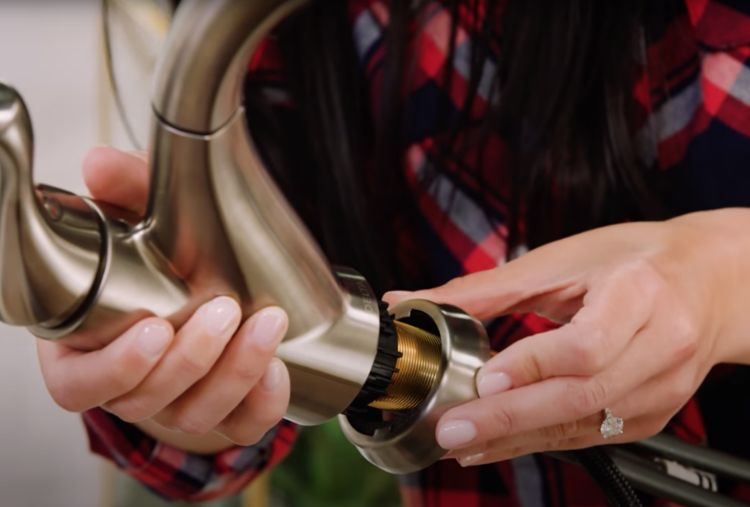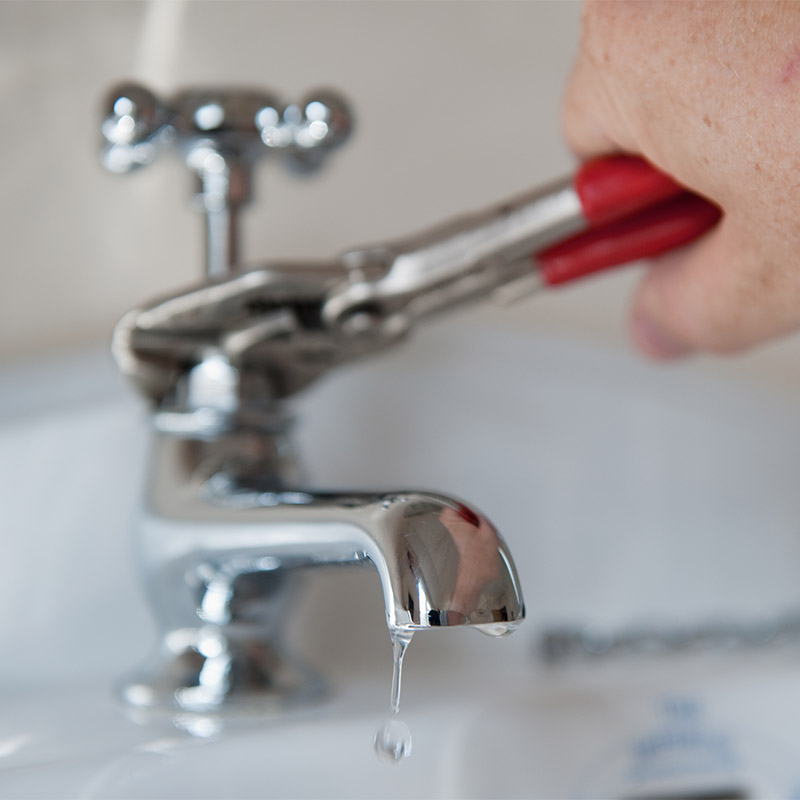An Reasons Behind Resolving a Malfunctioning Faucet
An Reasons Behind Resolving a Malfunctioning Faucet
Blog Article
What are your ideas regarding How to Fix a Dripping or Leaky Faucet ?

Leaking faucets may look like a small aggravation, yet their impact exceeds just the annoyance of the sound. From wasting water to incurring unneeded financial expenses and health threats, neglecting a dripping tap can bring about various consequences. In this post, we'll explore why it's vital to resolve this common family issue immediately and properly.
Wastefulness of Water
Environmental Influence
Leaking faucets add significantly to water wastage. According to the Environmental Protection Agency (EPA), a solitary tap trickling at one drip per secondly can lose greater than 3,000 gallons of water per year. This not just stress water resources yet likewise affects ecosystems and wildlife dependent on them.
Step-by-Step Guide to Fixing a Dripping Tap
Devices Called for
Before trying to take care of a dripping tap, collect the needed tools, consisting of a flexible wrench, screwdrivers, replacement parts (such as washers or cartridges), and plumber's tape.
Common Faucet Issues and Their Solutions
Identify the type of tap and the certain concern creating the drip. Typical problems include worn-out washing machines, corroded shutoff seats, or malfunctioning O-rings. Describe maker guidelines or online tutorials for detailed assistance on repairs.
Financial Costs
Raised Water Bills
Past the ecological effect, trickling taps can pump up water expenses considerably. The accumulated wastage over time equates into greater utility expenditures, which could have been avoided with timely repair work.
Potential Property Damages
In addition, prolonged leaking can lead to damage to components and surface areas bordering the faucet. Water buildup can cause staining, deterioration, and also structural concerns if left ignored, leading to added repair service costs.
Health Concerns
Mold And Mildew and Mildew Development
The constant existence of wetness from a dripping faucet produces a perfect setting for mold and mildew and mold development. These fungis not just endanger interior air top quality yet likewise pose health dangers, particularly for individuals with breathing problems or allergic reactions.
Waterborne Illness
Stationary water in dripping faucets can become a breeding place for germs and other microorganisms, enhancing the danger of waterborne conditions. Contaminants such as Legionella bacteria grow in stationary water, possibly resulting in serious diseases when ingested or breathed in.
Do it yourself vs. Professional Fixing
Advantages and disadvantages of Do It Yourself Fixing
While some might attempt to take care of a leaking faucet themselves, DIY fixings come with their very own set of challenges. Without correct understanding and devices, do it yourself attempts can aggravate the concern or lead to incomplete repairs, prolonging the problem.
Benefits of Hiring a Professional Plumber
Employing a specialist plumber makes certain that the underlying cause of the trickling faucet is addressed properly. Plumbing technicians have the experience and tools to detect and fix faucet problems successfully, saving time and reducing the risk of additional damages.
Environmental Responsibility
Individual Contribution to Preservation
Taking responsibility for repairing leaking taps aligns with more comprehensive initiatives towards water preservation and ecological sustainability. Every person's activities jointly make a substantial effect on protecting precious sources.
Sustainable Living Practices
By prioritizing prompt repair services and taking on water-saving practices, people add to lasting living methods that profit both existing and future generations.
Safety nets
Regular Upkeep Tips
To stop trickling faucets, carry out routine maintenance such as cleansing aerators, inspecting for leaks, and changing worn-out parts immediately. Additionally, consider installing water-saving tools or upgrading to a lot more reliable fixtures.
Importance of Prompt Fixes
Dealing with trickling faucets as quickly as they're discovered prevents additional water wastefulness and prospective damages, ultimately saving both water and cash over time.
Effect On Residential Or Commercial Property Worth
Understanding of Well-Maintained Home
Maintaining a property in good condition, consisting of resolving upkeep concerns like dripping taps, enhances its viewed value and worth amongst possible purchasers or lessees.
Impact on Resale Worth
Characteristics with well-kept plumbing components, consisting of faucets, command higher resale worths in the property market. Addressing dripping taps can contribute to a positive impression throughout residential or commercial property assessments and negotiations.
Conclusion
Resolving a dripping faucet surpasses simple benefit; it's an important step towards preserving water, lowering economic costs, and securing wellness and property. Whether with DIY repairs or specialist help, taking action to repair trickling taps is a tiny yet impactful means to advertise accountable stewardship of resources and add to a much healthier, more lasting future.
How to Fix a Leaky Faucet: Step-by-Step Repair Guide
A leaky faucet may seem like a simple annoyance, but if it's not fixed promptly, that leak could cost hundreds to potentially thousands. From water damage to mold, mildew, and high water bills, even a tiny leak can be catastrophic if left unattended. Damage like this can even affect the overall value of your home, so it's important to take the right approach for leaky faucet repair. You may need the help of a plumber in some cases, but we've got a few tips you can try on how to fix a leaky faucet before calling the pros.
Four Faucet Types
When you're learning how to fix a leaky faucet, the first step is knowing what kind of faucet you're working with! There are four common types.
Cartridge Faucets
Cartridge faucets come in one- or two-handled varieties. In one-handled cartridge faucets, hot and cold water combines in a single cartridge. In the two-handled versions, hot and cold water are controlled separately and mixed in the faucet.
Ball Faucets
Ball faucets have a single lever you push up and down to adjust the pressure and rotate to change the temperature. A slotted metal ball controls the amount of water allowed into the spout.
Compression Washer Faucets
They're the oldest type of faucet, but they're still used in many homes — especially older ones. Compression faucets have two separate handles that, when turned, raise or lower the washer that seals a water valve. This valve stops water from flowing through the faucet when it is turned off.
Disc Faucets
Disc faucets rarely need to be repaired due to their maintenance-free design. The water flow is controlled by two discs — the upper one raises and lowers against a fixed lower disc, creating a watertight seal. If your disc faucet starts leaking, you may need to replace the seals or clean residue buildup from the inlets.
Fixing a Leaky Faucet
Step 1: Turn Off the Water
Whether you're learning how to fix a leaky bathtub faucet or how to fix a leaky kitchen faucet, always turn off the water supply to your working area when you're fixing a leak. The last thing you want is a flood added to your list of things to fix.
Look for the shutoff valves below your sink or around the tub and turn them clockwise to stop the water flow. If your faucet doesn't have shutoff valves, you may need to turn off the water for the whole house. Check to make sure it's off by turning the faucet on. If nothing comes out, you're ready to start the repair.
Step 2: Take Apart the Faucet
How you disassemble your faucet depends on the type of fixture you have. You can use a flathead screwdriver to remove the caps on top of the handle or handles for cartridge and compression faucets. Inside, you should see handle screws. Unscrew these with a screwdriver to remove the handle.
Disc- and ball-style faucets will typically have an inlet screw near the handle, and removing that will reveal the interior of the faucet.
Detach the Valve Stem
For cartridge- and compression-style faucets, you'll see the inner valve stem or cartridge once you remove the faucet handles. If you have a compression faucet, unscrew the brass valve stem. If you have a cartridge faucet, pull out the cartridge. If your cartridge has been in place for a while, it may require some tools or extra force to remove it due to mineral deposits.
Examine and Replace Parts
Once you've removed the parts, check them out to confirm what needs to be replaced. You may see corroded rubber washers, O-rings, stems, or cartridges. On a ball-style faucet, check the seats and springs for damage.
If you need to repair a leaky disc faucet, check the inlet and seals on the lower disc.
Once you determine what parts must be replaced, visit your local hardware store. Bring the damaged parts with you to ensure you can purchase the correct components to replace them.
Clean Valves and Faucet Cavity
If you've removed a stem or cartridge, you may notice mineral buildup in the faucet's threads. Use white vinegar to clean the valve seat by soaking it for a few minutes, then scrub it away with a soft toothbrush and rinse with warm water. You can also clean the interior of the faucet in the same way.
Reassemble the Faucet
Once your faucet is cleaned and the required parts have been replaced, it's time to reassemble it. Put the pieces back together and slowly turn the water supply back on. Doing this slowly is crucial because too much initial water pressure can damage the new hardware you've just installed.
https://homewarranty.firstam.com/blog/how-to-fix-leaky-faucet

We are very interested by Leaky Faucets: Why They Happen & What to Do About Them and I am praying you enjoyed the piece. Sharing is caring. Who knows, you may very well be doing someone a favor. I cherish your readership.
Report this page